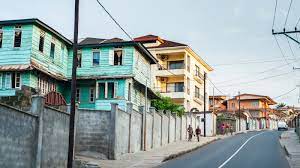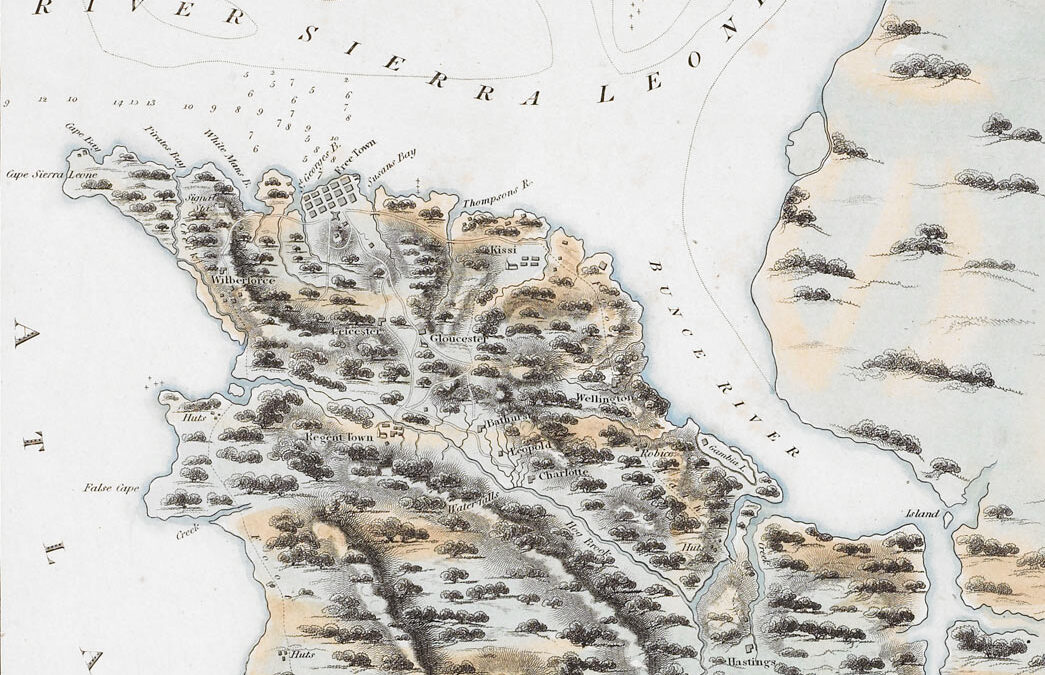HASTINGS. In the year 1819 Sir Francis Rawdon Hastings visited Sierra Leone from England to see how the Colony of freed slaves (“Settlers”) were adjusting to their new environments. He visited two sites where there were different tribes – the Akus, Ebos, Egbas, Congos, Hausas and Maroons. The locations were Jui Wharf and Rogbangba. The area was renamed Hastings in honour of the visit. Because of the differences in their original languages, quarrels and fights between the various communities in Hastings were a frequent occurrence. This led to each group distancing itself from the other. One prominent group gave the nearby hamlet the name “KOSSOH” (meaning “Family”). Afterwards it became “KOSSOH Town” (or “Tong”, the Krio equivalent) The AKUs moved to a location which became “AKU Tong”, the EGBAs to “EGBA Tong”, the MAROONs to hillside “MAROON Wata (“Water)”, the CONGOs eastward to Waterloo Water Bridge. The IGBOs and HAUSAs remained in the central area of the village within range of the market.Since each group happened to settle intact, they were able to keep their cultural practices unadulterated. They each secured a separate venue for performing their rituals. Such sites were called “SHEKEH” meaning “Small Town” – this explains why, in due course, all inhabitants/descendants of Hastings became known as “ARASHEKEH”.

KANGBE, meaning “the original,” is located around the Freetown Peninsula. It is also called Hamilton in English. It is an original Creole Village that has a fine beach, poultry farms, large back yards, and houses with wide verandas. The people are often called “Kangbe Creole,” meaning Original Creoles, although some think Kangbe Creoles are mixed Creoles with some Loko addition.
MURRAY TOWN is a seaside village bordering Congo Town to the East, Aberdeen and Lumley to the West and Wilberforce to the North. The village boundary extends as far as a small river known as ‘wan coppor wata’ on the boundary with Lumley. The village was named after Mr. George Murray who was the Secretary of State for the Colonies in 1829. Like most villages in Freetown, it was settled by liberated Africans in the early 19th century either with the authority of the colonial governors who had decided to divide the surrounding areas of Freetown into parishes for administrative purposes, or by occupation by the liberated Africans. It was unique in its ethnicity of being overwhelmingly from the Egba tribe of Nigeria whose vernacular is Yoruba. Today the village is a kaleidoscope of ethnicities. Murray Town was known for real or imagined stories about serious physical or psychological consequences on anyone who passes through OLOSHORO (a small stream which leads into the heart of the village), with evil or malicious intent on any born and bred resident of the village. These stories have all gone into the realms of Murray Town mythologies.
RICKETS, on Banana Island, because of the rickety boats that plied the route, and some were sunk during hurricanes. The village can best be viewed from Number 2 River or from Kent.

